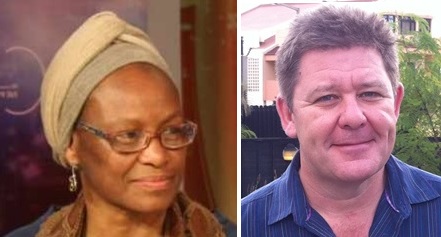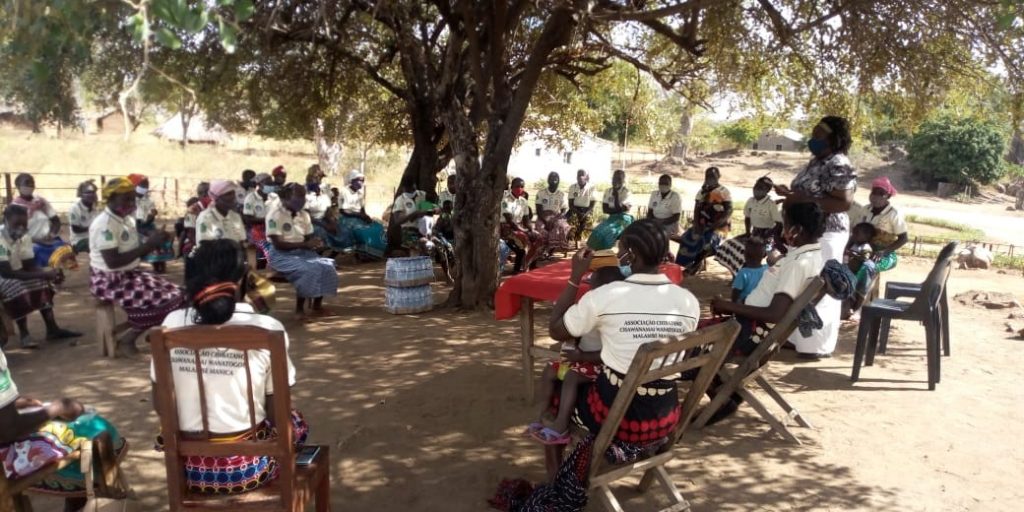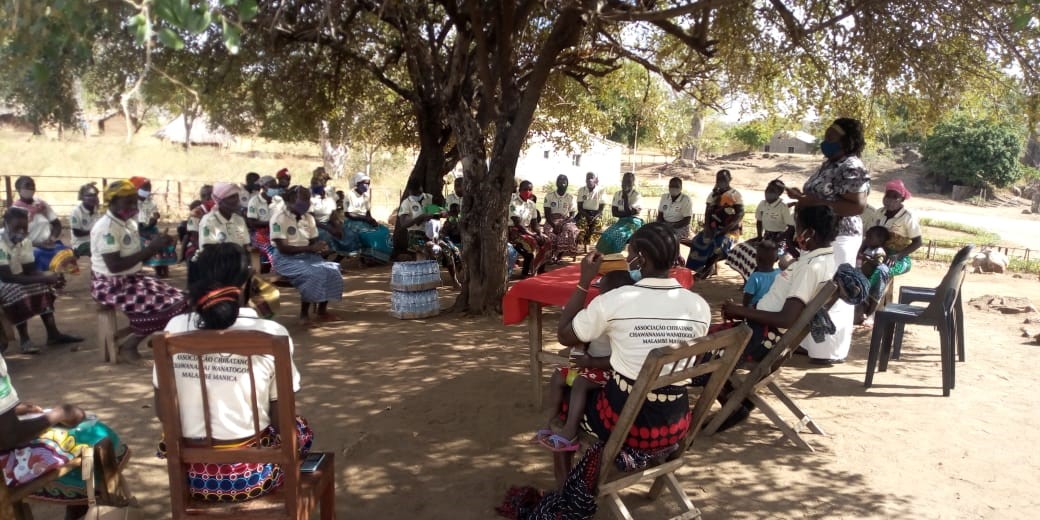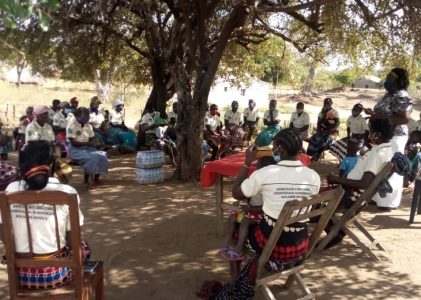
Context
Working in civil society in Mozambique is a challenge. Not only is the country classed as repressed by the CIVICUS Monitor, but the northern province of Cabo Delgado has been subject to an armed insurgency since October 2017, claiming thousands of lives and displacing an estimated half of the province’s population.
The resulting clampdowns on free expression, the attacks on journalists, and the tightening restrictions on NGOS, all combine to make life difficult for the Giving for Change programme. To learn how the work is shaping up, Ese Emerhi (Global Network Weaver at the Global Fund for Community Foundations – GFCF) and Barry Knight (Advisor to the GFCF) caught up with Milagre Nuvunga, Executive Director of Micaia Foundation, and Andrew Kingman, Managing Director of Eco Micaia, to learn about their efforts to build community philanthropy.
Giving for Change programme
Barry Knight (BK): How are you approaching the challenges?
Milagre Nuvunga (MN): We knew how difficult it would be to build an enthusiastic movement for community philanthropy. Much of civil society has adapted to a deeply structured society built on a system of rewards, excessive bureaucracy, and top-down formality in which the dominant funding paradigm weakens local leadership and any sense of independence. We could not expect established civil society organizations to quickly embrace a process that could lead to their being challenged by more confident, self-resourced communities and constituencies.
BK: What is the progress on building community philanthropy?
Andrew Kingman (AK): We’ve had to reshape the programme as we go; the general strokes of the original design are still there, but our tactics have now changed. Fortunately, the Giving for Change programme is flexible and we can adjust it when we need to.
The initial budget for the programme was organized around “events” – hotel accommodation, transportation, food, etc. – and really, this is not the way to go about bringing people together and learning as a community. It just reinforces the system of rewards for people, and so in changing our approach to budgeting, we’ve found that people are now directly contributing to trainings by offering meeting space, time, and expertise, or other in-kind support.
We have been working with young people and have supported 63 young activists to become trainers and facilitators in resource mobilization, advocacy and lobbying. We call them “community philanthropy agents” (CPAs). We are hoping by the end of the year to have 150 young people go through the training. This is a direct result of the Giving for Change programme.
Working in communities
BK: How do your partners and the communities you work in react to the Giving for Change programme?
MN: Ah… (big sigh!) … we feel the complexity of the whole project in operating in Mozambique. Bringing something new to people who are used to doing things a certain way is hard.
There is a difference in reception to the programme in the two landscapes we are working in – Maputo and Chimoio. In Chimoio, because it is in a smaller urban setting in the heart of a rural province, where power dynamics are not as pronounced, people are eager to change things, but there are fewer spaces to work in to improve on philanthropic work. In Maputo, a large city with firm traditional NGO structures, we notice more resistance to getting people together; the preference is to work apart and alone.
AK: The challenges we face are not that drastically different from other programmes, but in our context, this is the first time we are working on a more national level. NGOs in smaller communities like Chimoio are poor and so are more open to trying new things. In Maputo, NGOs there tend to not really be interested in the programme, too entrenched in the incentives around the system of rewards of traditional development work that only encourages you to look after “number one.” We are really working against the grain here with the Giving for Change programme; we need to first build that bandwagon and hope that they will join later.

BK: So, what is working well?
MN: One important success story is in the work we are doing with sex workers. They have been able to break through the moral barriers around their work and are able to have dialogues with wider audiences around bigger issues like health care and violence; this is bringing a diverse group of stakeholders together willing to offer support and help. For example, human rights organizations have stepped up to offer support around advocacy campaigns and fundraising. The private sector is willing to offer business development opportunities in different fields. The government’s health and the social action directorates are willing to help and review their relationship with this group so they can access required services. Other marginalized groups like the LGBTQ+ community and the blind community are using similar tactics to transition from being stigmatized to being agents of change and championing progress.
BK: That sounds like progress! What opportunities are opening up through the programme?
AK: When we did our first set of trainings on advocacy, we realized there was an opportunity to cascade this into something bigger. The CPAs are supporting local civil society organizations as part of the matching grants programme designed to stimulate community philanthropy, and not wait on a donor or project to come along and do it for them.
Our research agenda aims to develop this. It is centered around three themes: 1) Attitudes around giving and possibilities of change, especially around giving during cyclone Idai that displaced thousands of people; 2) Traditions of giving – stories of philanthropy within the family and extended family; and, 3) Tax incentives for businesses around corporate philanthropy.
Ese Emerhi (EE): You spoke about how language can both be a barrier and an enabler for this kind of work. How are you defining community philanthropy?
MN: There are challenges around basic words like “agency”, for instance, that don’t exist in the Portuguese language. Luckily, we were able to connect and learn from examples from the Brazilian Philanthropy Network for Social Justice on how they have defined some of these terms around community philanthropy. For most people, philanthropy is understood as those big things that are done by institutions or high-net worth-individuals (HNWIs), and not on the smaller, almost invisible ways people give every day. We wanted to open up the conversation more on the “meaning of giving” instead of getting stuck on specific words, concentrating on the message. We understand that this might take some time, a slow adoption of some of these themes, and so we are not working right now on redefining community philanthropy or coming up with new terms for it.
AK: We started by first working internally in our own organization to come to some sense of understanding of what community philanthropy is. Milagre and I have more experience than the other younger staff members, so it was important for us and them to use the programme to also empower our younger staff.
BK: What is in the immediate future for Micaia Foundation?
MN and AK: Well, there are a number of things in the pipeline:
- The matching grants component of the Giving for Change programme is a big step for us. We want to use this to work across different teams, bringing the work closer and cross-fertilizing ideas and stories. We are hoping that this would, in turn, help to break down some of the major differences between big cities like Maputo, and smaller ones, like Chimoio.
- Testing out models we’ve developed over time with the community of practice: we want to explore and ask the big questions like what is working and what is not; how will this work impact the next two years; how can criticisms of the work be incorporated into the implementation of the programme; and do they enjoy this type of work centered on community philanthropy?
- Our communications work has also been changed to now include working with a local media agency on an advocacy campaign that will gradually build awareness around community philanthropy over the next two years. Eventually, we hope to also include the national government in this piece of work.
- We will also be following up with the African Philanthropy Network on the work we did on the baseline for Giving for Change. The baseline identified some key areas of work that we need to work on, especially with the government and gender/feminist philanthropy. As we are also gathering data to bring more visibility to the work women do in philanthropy, perhaps key strategies around this line of work can be developed.
BK: What do you need now to take Micaia Foundation to the next stage?
MN: Learning and sharing examples of community philanthropy would help deepen our work. Spaces like the Giving for Change Family meetings help with knowledge exchange, but also the partner meeting in Ghana helped to build personal connections and interactions with all partners and to break down some of the silos of our work and further help conversations flow much easier and more effectively.
If you liked this article you may also like;

